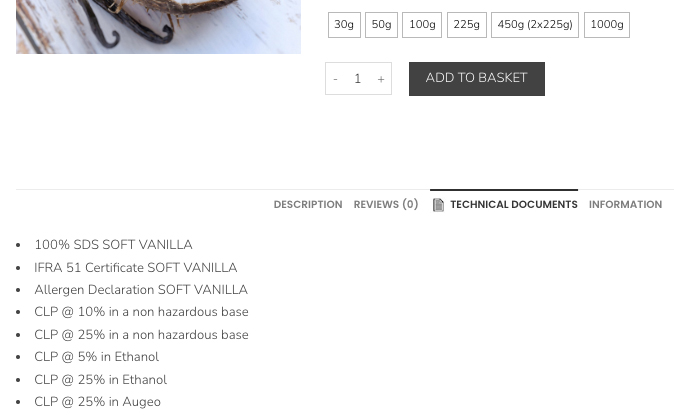This is a long post, but it is important. Hopefully, any questions it raises will also be answered by the time you have read it all through. Please read it through fully and if you have any questions, please contact me
There have been a huge number of regulatory changes in recent times, and this can sometimes mean changes to the SDS, Allergen Report and IFRA, with new ‘version’ numbers of the documents being issued when changes take place. The regulatory changes can sometimes affect the CLP guidance too.
Our main manufacturer has recently made changes to their document delivery system and is now sending us the most up-to-date ‘versions’ of the SDS, IFRA and Allergen Report when we order new batches of oils, whereas we have previously only had the original versions of the Technical Documents that we had when we first purchased the oil. The other manufacturers that we use, that we buy a smaller number of my oils from, haven’t ever sent us any new versions, so it seems that this may be the typical industry practice, but as technology and regulations change, so do manufacturers’ practices.
Best practice guidance is that the upline company provides the most recent version of documents as soon as is reasonably practicable after the change. We now have a lot of updated SDS, IFRA and Allergen Reports which we must update and upload to the website to make them available to our customers as soon as reasonably practicable.
What this means for our customers is that you will need to check the Technical Documents tab on the oil listing on the website, whenever you order oils to make sure you have the most up-to-date versions of all documents and CLP, so that you can alter your own labels as soon as reasonably practicable.

You can also check if the hazards in any oil have changed to such a degree that means you no longer want to use that oil. So, for example, an oil may be ‘Harmful to aquatic life’, but a regulatory change may mean that a particular ingredient in an oil now triggers the ‘Toxic to aquatic life’ hazard at lower levels, meaning an oil could go from ‘Harmful’ to ‘Toxic’ and your personal policy might be that you won’t use ‘Toxic’, or vice versa, it could go from ‘Toxic’ to ‘Harmful’.
Version numbers of the SDS, IFRA and Allergen can be found in the top right-hand corner of each page of these documents. If any of these documents have a higher version number than the previous one you have downloaded, then please double check the CLP guidance available on the website to the one you have previously downloaded, to see if there are changes, so that you can update your own records.
In addition to this, due to the huge amount of Regulatory work, the manufacturer must cope with due to the incredible number of recent changes with Allergens and IFRA regulations etc. They will not be providing us with the updated CLP guidance in Ethanol or Augeo. As a result, when we make any updates to SDS etc, on the website, we are removing previous versions of the CLP in Ethanol and Augeo from the website. We are hoping that the manufacturer reverses this decision once they are no longer overwhelmed. However, we are unlikely to know one way or the other for a while, as they are reviewing the situation monthly.
We are also looking at the possible options available to us, in the event they don’t reverse the above decision, which will enable us to provide the Ethanol and Augeo CLP guidance notes that we currently do.
We will update our website further if further information becomes available.
Thank you.
Louise